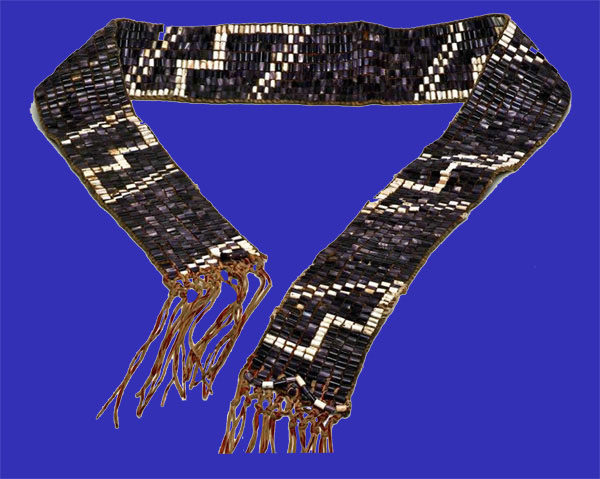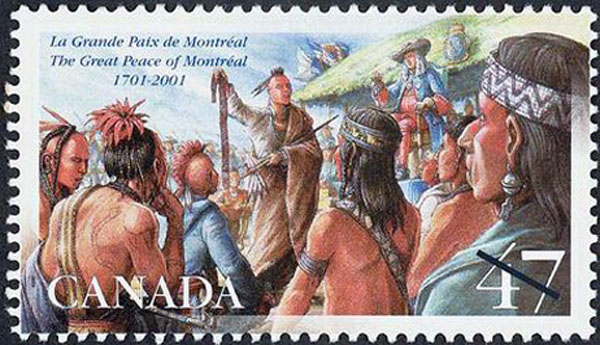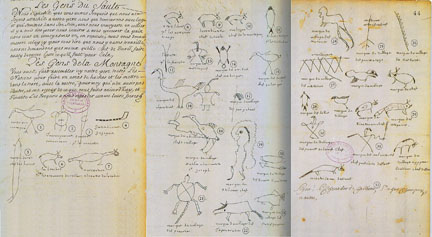 |
 |
Photographs (left to right): Canadian Geese, Rush, New York; Sandhill Cranes, Shark Valley NP, Florida; Hamlin Beach State Park, New York
Wampum Belt Archive
The Great Peace Belt
1701

Reproduction R. D. Hamell July 06 2014
Original Size: |
not given |
Reproduction: |
Beaded Length: 48.0 inches. Width: 4.2 inches. W/ Fringe: 72.0 inches |
Beads: |
Length: 295 row by 9 wide. 2,655 beads. Plus 11 beads attached to right end. |
Materials: |
Warp: Leather. Weft: Artificial Sinew |
Description:
"Planting the Tree of Peace on the highest mountain in the land is a way of making general peace."
Bacqueville de La Potherie

 |
TERMS OF THE TREATYThe peace treaty signed in Montreal on August 4, 1701, hinged on the following four points:1. The signatory nations agreed not to make war on each other and agreed to symbolically bury their weapons.2. The signatory nations considered each other allies or at least friends.3. The signatory nations agreed that they would all have free access to the hunting grounds north of Lake Ontario and west of Detroit.4. The signatory nations agreed to recognize Governor Calliere as the mediator in any disputes among them. |
Huge conferences such as the one in Montreal in 1701 were a public face of diplomacy in North America. Such flamboyant occasions have captured historians' interest, overshadowing equally crucial clandestine maneuvering.
Disinformation, propaganda, spying, attempts at bribery and secret negotiations were just as essential a part of North American diplomacy as official meetings.
The French naturally wanted to prevent their system of alliances from breaking down as a result of official or under-the-table diplomatic maneuvering by the Iroquois or their English allies, and so did not hesitate to circulate false rum ours among their allies or enemies.
Thus, not long after the French-Iroquois peace treaty of 1667, the French authorities announced to the Iroquois that the Ottawas were preparing to attack their villages. An anonymous account of Governor Remy de Courcelle's voyage as far as Lake Ontario, in 1670, noted that the Iroquois "believed this so thoroughly that they imagined the Ottawas, weapons in hand, coming to rip their throats out even in their own homes."
By spreading this false rumor the French were aiming to disrupt the closer trading ties growing between the Ottawas and the Iroquois. This kind of disinformation, as old as diplomacy itself, was by no means an exclusively European trick. Natives were equally skilled in this technique. Member of the Five Nations used themes that they knew would gain the attention of the French and their Native allies.
The Great Peace Treaty

Reference:
Montreal Museum of Archaeology and History
 |
 |
 |
 |
 |
 |
 |
 |
|---|
